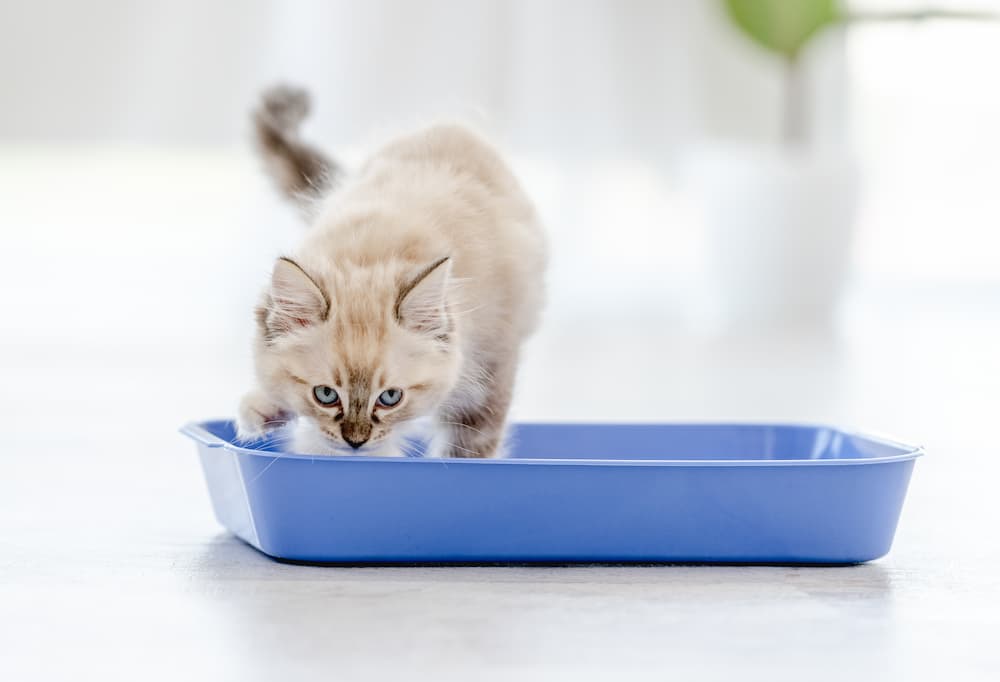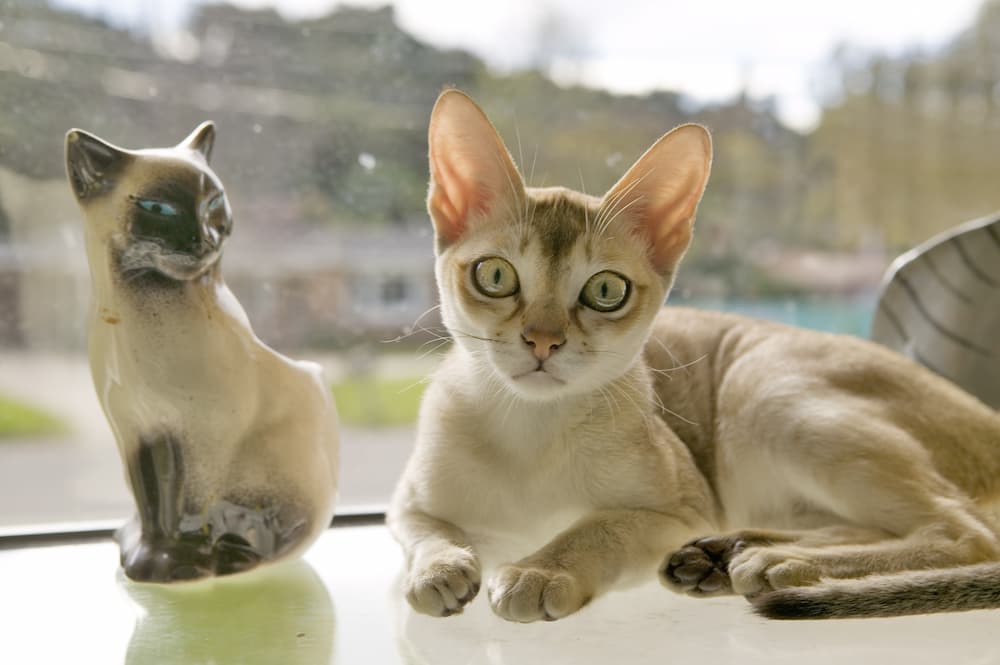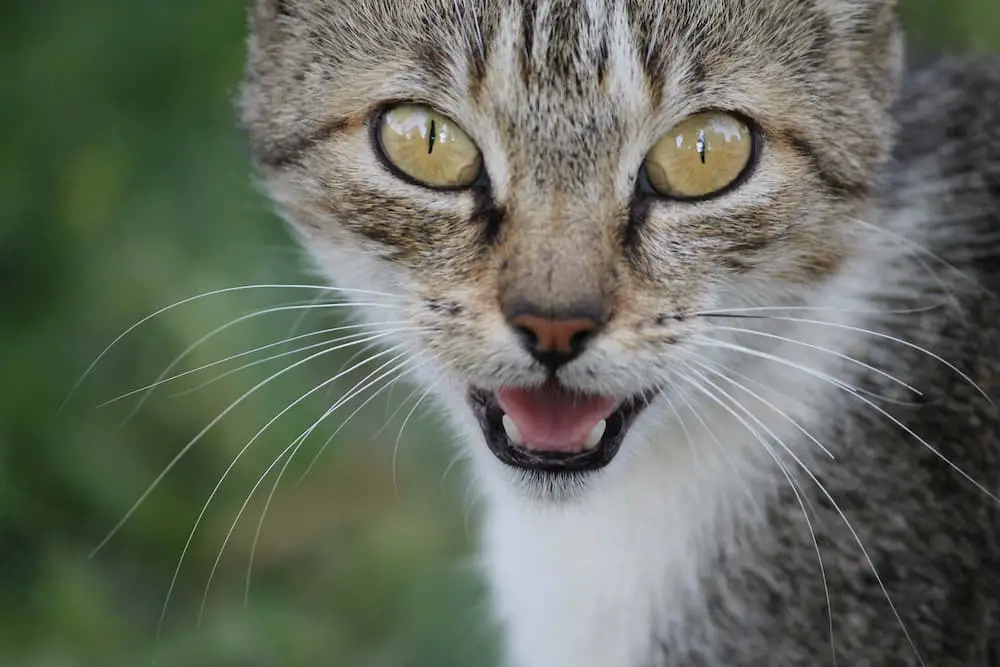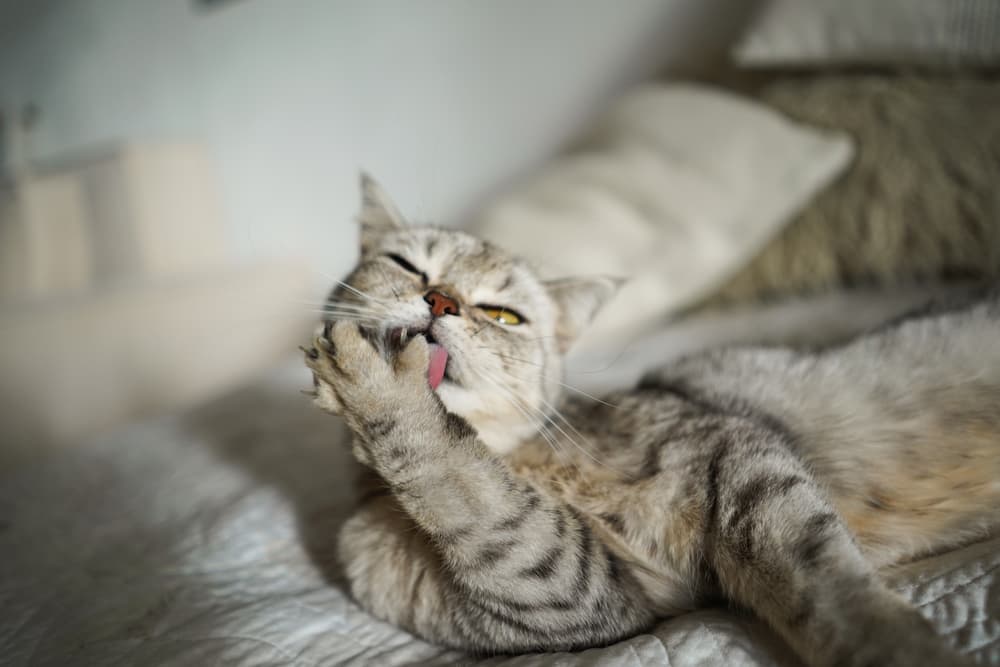Cats are incredible animals! It’s important to understand every part of the fascinating feline body if you’re providing care for a cat. This guide will help you learn to care for all your cat’s body parts, and help keep him healthy and happy for years to come!
Ears

Each of your kitty’s amazing ears is controlled by 32 muscles. They work in sync to rotate up to 180 degrees to better hear any sound. Speaking of hearing, cats have a super-powered sense of hearing! They can detect differences in sound that are just one-tenth of a tone apart — putting dogs’ and especially humans’ hearing to shame. Also, ears are critical to your cat’s balance. So, it’s important to keep those amazing ears healthy. Conditions that can affect your cat’s ears are allergies, parasites (like ear mites), and trauma.
In order to maintain healthy ears, you should gently clean off wax, dirt, and debris and use only an ear cleaner that is safe for cats. We use and highly recommend OxyFresh Ear Cleaner.
Eyes

If you thought a cat’s hearing was great – their vision is even better! Cats only need one-sixth the amount of light that we humans do to see clearly! In order to take advantage of all available light, the back of the cat’s retina contains a layer of mirror-like cells called the tapetum lucidum which collects and reflects light and is responsible for the “laser eyes” you see if you photograph your cat with a flash.
Conditions that affect a cat’s eyes include cataracts, keratitis, conjunctivitis, glaucoma, watery eyes, feline herpes, and injury.
To care for those beautiful cat eyes, use only eye cleaner or saline to gently wipe them clean. Be extremely cautious when trimming the fur around your cat’s eyes. And, stay up to date on vaccinations, to help prevent eye problems from developing.
Mouth

Kittens are born with 26 teeth (which do fall out just like human baby teeth) and they are replaced with 30 adult teeth around 3-4 months of age. Since a cat’s jaw can only move up and down, and not side-to-side, it’s impossible for them to grind food. Instead, they have long canine teeth (shouldn’t they be called “feline” teeth?) in order to kill prey and premolars which work like scissors to tear food apart. Your cat’s tiny little front teeth are only used for grooming!
Even more fascinating than a cat’s teeth, is his tongue. It’s covered with backward-facing spines that act like a hairbrush when your cat grooms himself. That’s what causes the rough, sandpaper feeling when you get a kiss from your kitty.
To maintain your cat’s mouth, you should brush those teeth regularly to prevent disease. But, be sure to only use toothpaste for cats.
Skin

Cats have anywhere from 60,000 to 120,000 hairs per square in on their bodies! They have minimal sweat glands on their bodies, with most of them located on their paw pads. Conditions that can affect your cat’s skin and coat are feline acne, infections, parasites, allergies, stud tail, shedding and hair loss, and dry skin.
In order to maintain your cat’s skin and coat, you should brush her regularly and check for parasites, like fleas. Bathe your cat with shampoo that is intended for use in cats, and provide a healthy diet. Our absolute favorite cat shampoo? The cat shampoo bar from JR Liggett’s. If bathing your cat is out of the question, these Fresh Fur Cat Wipes from True Blue are awesome, too.
Brain

For all those who think cats aren’t very smart, let them know that cat’s brains are structurally much more complex than those of their canine counterparts! Cats have 300 million neurons in their cerebral cortex, compared to 160 million in a dog. Those neurons are responsible for a cat’s problem-solving ability.
To keep your kitty’s brain in tip-top shape, let him play with interactive toys and brain games. Feed a diet that’s rich in antioxidants and omegas to maintain cognitive function. And, if your kitty is getting older, keep a night light near his sleeping area to accommodate declining vision.
Paws

Cat paws aren’t just colorful and cute – they serve many vital functions that help a cat survive! They’re used to mark scent, sense the environment, and for hunting and grooming. A cat’s paws are extremely sensitive. Cats can feel texture, pressure, and even vibrations through their paw pads. To maintain the health of your cat’s paws, trim claws regularly and provide plenty of appropriate scratching surfaces, like scratch posts and pads.
By understanding all the parts of your cat and their functions, you’re better prepared to keep your kitty healthy and happy! What’s your favorite part of your cat? Tell us below! And, if you found this article helpful, pin it!








